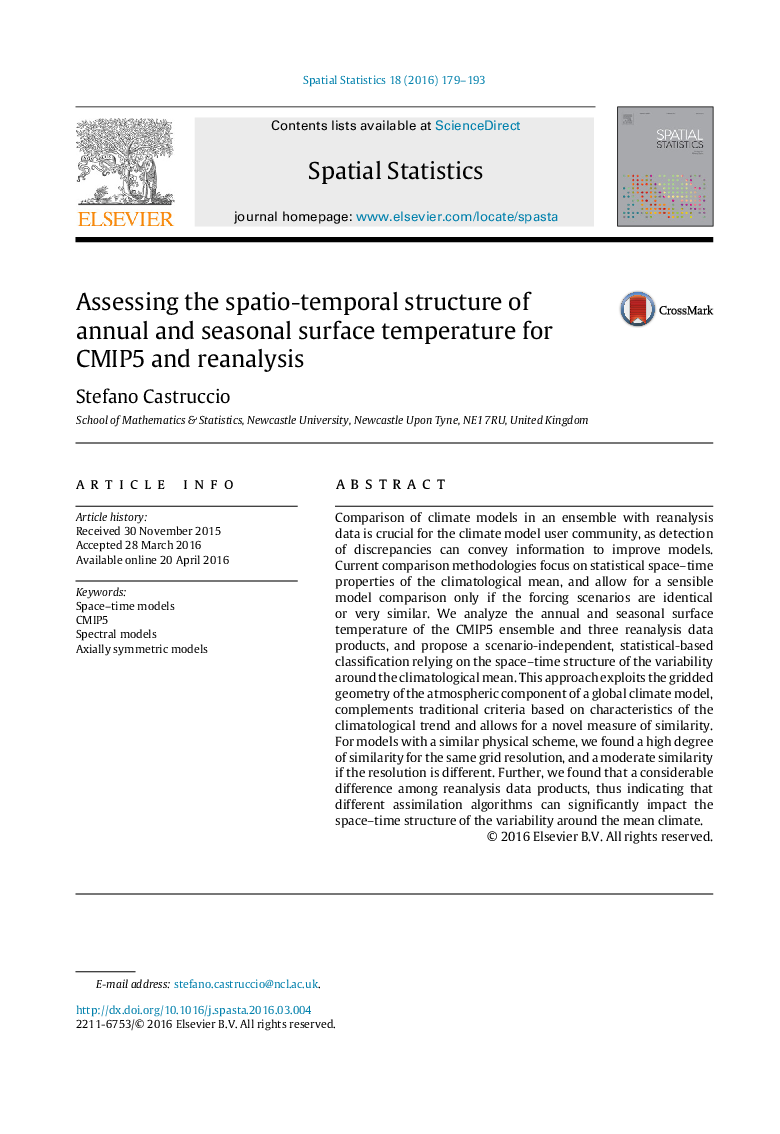| Article ID | Journal | Published Year | Pages | File Type |
|---|---|---|---|---|
| 5119068 | Spatial Statistics | 2016 | 15 Pages |
Abstract
Comparison of climate models in an ensemble with reanalysis data is crucial for the climate model user community, as detection of discrepancies can convey information to improve models. Current comparison methodologies focus on statistical space-time properties of the climatological mean, and allow for a sensible model comparison only if the forcing scenarios are identical or very similar. We analyze the annual and seasonal surface temperature of the CMIP5 ensemble and three reanalysis data products, and propose a scenario-independent, statistical-based classification relying on the space-time structure of the variability around the climatological mean. This approach exploits the gridded geometry of the atmospheric component of a global climate model, complements traditional criteria based on characteristics of the climatological trend and allows for a novel measure of similarity. For models with a similar physical scheme, we found a high degree of similarity for the same grid resolution, and a moderate similarity if the resolution is different. Further, we found that a considerable difference among reanalysis data products, thus indicating that different assimilation algorithms can significantly impact the space-time structure of the variability around the mean climate.
Keywords
Related Topics
Physical Sciences and Engineering
Earth and Planetary Sciences
Earth and Planetary Sciences (General)
Authors
Stefano Castruccio,
